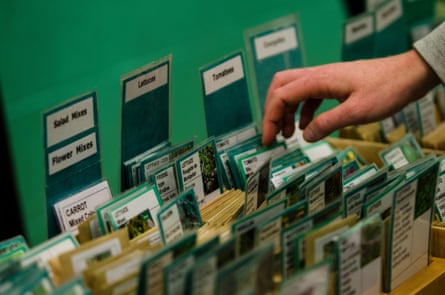
Visit the average garden centre and you might assume it costs a lot of money to get into gardening, but that isn’t the case. No matter how many products and plants are on offer, or how relentlessly the Instagram ads insist, gardening is not shopping. My focus in the garden has always been the plants, not the paraphernalia.
Thankfully, the tide is turning towards low-intervention, nature-centric gardening, which works well for those who don’t have much to spend. You don’t need a traditional garden to start growing, either, as many indoor and outdoor spaces – balconies, porches, windowsills – can be used for pots, as long as the the plants catch the sun.
So, the mental and physical benefits of spending time in green spaces and tending to plants are not just for people with large gardens and plenty of disposable income. Here are some tips for making things happen for very little money.
Grow plants from seed
Starting plants off from seeds, rather than buying them already grown, is one of the most cost-effective ways to fill your garden with life, so mastering how to raise young plants is well worth the time and effort. You can find packets of seeds of almost any plant at your local garden centre or at online seed suppliers, such as Real Seeds or Tamar Organics; most cost no more than a few pounds. Each packet contains hundreds of seeds that will be viable for a good number of years, so a modest initial outlay (including for seed compost, if you are sowing into pots or trays) goes a long way.
Additionally, learning how to harvest and save seeds from existing plants (start with straightforward options such as peas, nasturtiums and snapdragons) will keep your seed collection replenished for next to nothing. Every spring, seed swaps take place all over the UK; here, you can exchange your seeds for something new and benefit from the advice of other seed savers.
Make your own compost
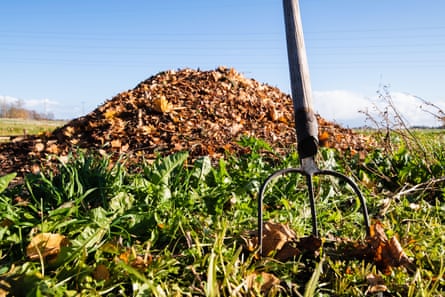
A compost heap or bin requires some space, but it is a low-cost way to make the precious, nutrient-rich substance that plants need to grow. Making compost is a skill that requires honing, but once you get your head around the alchemy of the process it is quite straightforward. It takes the right mix of leafy and woody plant matter; access for the creatures who help it decompose (position your heap directly on the ground); the occasional turn with a garden fork, to aerate it (oxygen must be present for decomposition); and plenty of patience.
With all these elements in place, you will be on the way to producing your own compost – with the added bonus of creating a place to recycle your food and garden waste. People go wrong when they treat their compost heap like a garden bin, so don’t fill it with twigs and lawn clippings, ignore it and expect it magically to produce something useful.
Find unused plastic pots
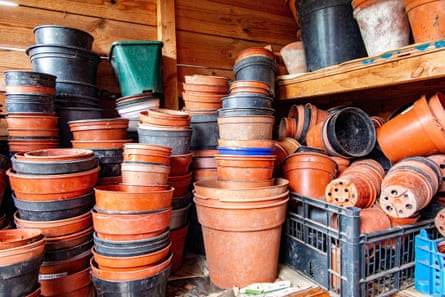
All the plastic pots we will ever need as gardeners already exist; our job is to find them. There are so many unused plastic pots around – in piles behind neighbours’ garden sheds, stacked up in community gardens and allotments, behind the scenes at the garden centre – so ask around. I use plastic pots throughout the garden season, from seed sowing to growing fully mature plants, as they are lightweight and re-usable and do a decent job of retaining water in the compost for roots to absorb. The vast majority of plastic use has to end; for gardeners, that means never buying a plastic pot again.
Embrace weeds

Wild gardening – an approach to growing that involves more naturalistic planting and incorporates so-called weeds – is more than just a trend. It is an enlightened and often beautiful way to bring a lighter touch to our gardening efforts for the benefit of the natural world. Often, it is also a cheaper way to garden.
Many of the plants that we think of as weeds are beneficial; incorporating them into your garden only requires you to learn about their tendencies. If we get to know these “volunteer plants”, and understand how they grow and why they are often deemed troublesome, we can welcome them without letting them take over.
Herb robert, for example, is a member of the geranium family that grows well in the shade, has frilly leaves and produces pretty pink flowers appreciated by hoverflies. Their exploding seed pods mean it spreads readily, so I remove all but the plants I have room for. Jack Wallington’s wonderful book Wild About Weeds is a great guide to this approach.
Get free stuff online
With the help of websites such as Facebook Marketplace and apps such as Olio, finding secondhand treasure has never been easier. Just looking at my neighbourhood NextDoor site today, I can see stacks of plant pots, a compost bin and tools going free, while someone is selling a garden table and four chairs for £20. I have even seen free greenhouses, but these may need to be dismantled and reassembled.
Since you can post questions on NextDoor, it is a perfect place to enquire if you can borrow a lawnmower or a hedge trimmer, to save you buying one.
Make your own fertiliser

As an organic grower, I have never felt compelled to spend money on expensive pesticides, herbicides or chemical feeds – fortunately so for the environment and my bank account. I rely on homemade plant feed, especially for the plants I grow in containers, as the nutrients in the compost will eventually run out.
Nettles make a nitrogen-rich feed that is supportive of leafy growth, while comfrey produces a feed that is good for fruiting plants, such as tomatoes, due to its potassium content. Fill a bucket with the leaves and cover with water, then weigh them down with a brick. After a few weeks, the leaves will have rotted, the water will have darkened and the whole thing will smell awful. Strain some of the liquid into a watering can, dilute it with water until it is the colour of weak tea, then feed your plants for free. (If you are lucky enough to have fertile soil, you may not need to feed your plants, but some – especially hungry crops – will benefit from supplementary feeding.)
Sow prolific self-seeders
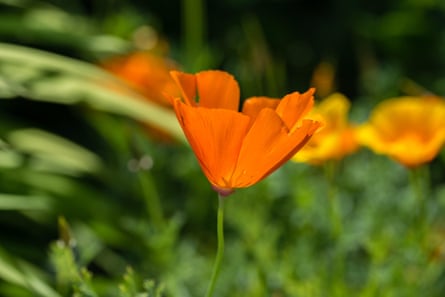
When I arrived in my garden in East Sussex four seasons ago, I sowed the seeds of various beneficial companion plants – to attract pollinators and distract creatures that might damage my crops – around the vegetable patch I had created. These included calendula, poached-egg plant, nasturtiums, California poppies and nigella. Once the flowers had disappeared, I left the seed pods to mature, so that their seeds would disperse, before clearing away the spent plant. Every spring, the next generation of blooms appear with zero additional effort on my part. The one thing I have to do is remove some of these volunteer plants, because I need to make room for crops in my small plot.
Not only do these plants entice pollinators into my garden, but they also look incredibly beautiful and will keep appearing and flowering for many seasons to come.
Make new plants from old
Perennials live for multiple seasons and are often reproduced through cuttings (taking a small part of an existing plant and placing it in free-draining compost until it grows roots of its own), or by dividing the plant. Rhubarb, hostas and hardy geraniums can be lifted out of the ground, divided into a few parts and planted elsewhere. Raspberries and strawberries produce baby plants by throwing out runners, which can be dug up easily and planted; they will produce fruit for you by the next season.
The number of plant varieties you can grow from cuttings is countless – from lavender and rosemary to roses and fuchsias. Just be sure to take several cuttings in case not all are successful. While this tip requires access to a parent plant (from a friend, a family member or a generous community garden, perhaps?), it does result in free plants.
Rescue supermarket herbs
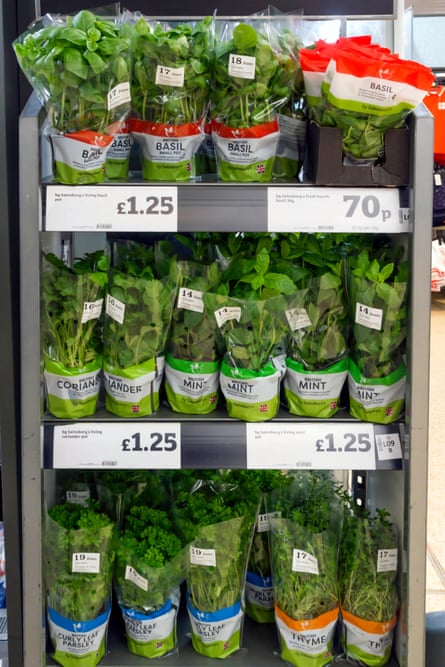
Most of the potted herbs sold by supermarkets are not set up to live very long; if you plant them straight into your garden, they will probably die swiftly. But it is possible to rescue supermarket herbs from this fate with a little intervention and fresh compost.
Water them generously before removing the pot, so you can see the root system. It is likely that there will be a lot of plants growing in close proximity, so the first thing to do is separate them by gently, but confidently, teasing the roots apart. You may find netting around the roots constraining their growth, so get rid of that. Then you can repot the herbs – a few plants to each pot – into fresh compost and give them another drink. Soon you should have a happier set of plants that will flavour your food for a long time.
Create support structures
When plants start to grow taller and vines reach out for something on which to climb, our job is to help. Buying bamboo canes or frames made of metal or willow can be pricey, but sufficiently sturdy structures can be constructed from materials you might find around a garden. The support structure on my raspberry patch was hammered together using fallen tree branches; my peas scramble up the largest twigs that blew down over winter; and my beans are climbing a tripod of hazel from a neighbour’s garden. I have even seen a gourd climb a tree to find the support it needed, although I imagine that would make for a challenging harvest.
Good-quality jute twine, which can be picked up for a couple of pounds, is a worthwhile investment for tying branches together and securing plants to structures, but as long as the wood you use isn’t rotten, you can support plants for very little outlay.



